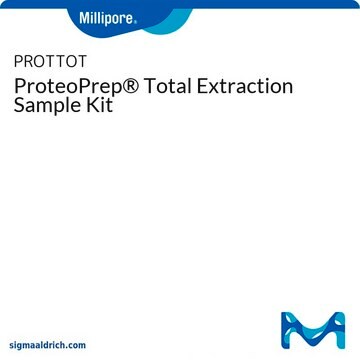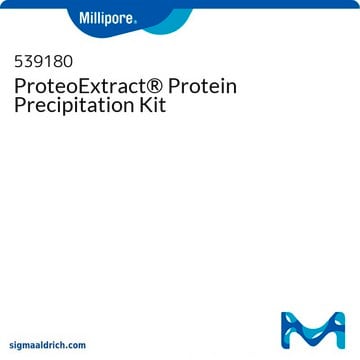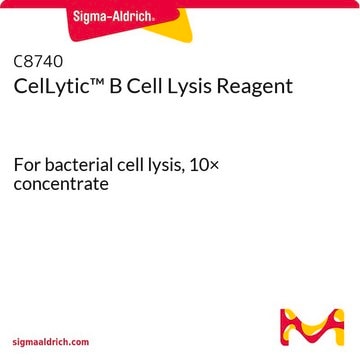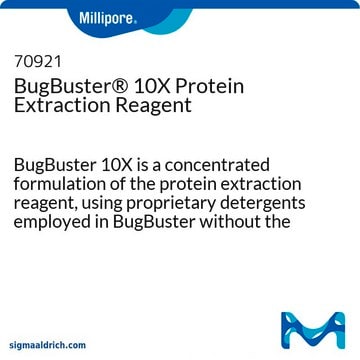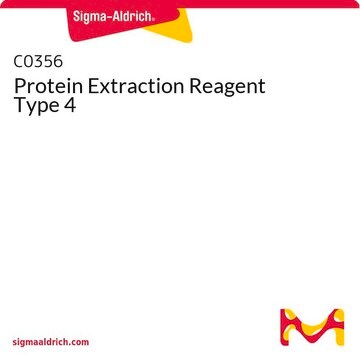Recommended Products
form
solid
General description
Premixed and prequalified, Protein Extraction Reagent Type 3 is a highly effective protein solubilization and extraction reagent composed of urea, thiourea, Trizma®, and detergent ASB-14 (A1346).
Application
Protein Extraction Reagent Type 3 is optimized for proteomic studies. Chaotropic Extraction reagent 3 is ideal for protein extraction prior to isoelectric focusing and 2D electrophoresis. Reducing and alkylating reagents TBP (T7567) and iodoacetamide (A3221) are recommended for use with this reagent. Protein Extraction Reagent Type 3 is also available as a component of the ProteoPrep® Sample Extraction Kit (PROT-TOT).
Components
Contains urea, thiourea, Trizma®, and detergent ASB-14 (A1346).
Legal Information
ProteoPrep is a registered trademark of Merck KGaA, Darmstadt, Germany
Trizma is a registered trademark of Merck KGaA, Darmstadt, Germany
Signal Word
Warning
Hazard Statements
Precautionary Statements
Hazard Classifications
Acute Tox. 4 Oral - Aquatic Chronic 2 - Carc. 2 - Repr. 2
Storage Class Code
11 - Combustible Solids
WGK
WGK 3
Flash Point(F)
Not applicable
Flash Point(C)
Not applicable
Personal Protective Equipment
dust mask type N95 (US), Eyeshields, Gloves
Certificates of Analysis (COA)
Search for Certificates of Analysis (COA) by entering the products Lot/Batch Number. Lot and Batch Numbers can be found on a product’s label following the words ‘Lot’ or ‘Batch’.
Already Own This Product?
Find documentation for the products that you have recently purchased in the Document Library.
Sumihisa Orita et al.
BMC musculoskeletal disorders, 12, 134-134 (2011-06-18)
The exact mechanism of knee osteoarthritis (OA)-associated pain is unclear, whereas mixed evidence of inflammatory pain and neuropathic pain has been noted. We aimed to investigate pain-related sensory innervation in a monoiodoacetate (MIA)-induced model of OA. Sixty of seventy female
Xiaoping Ao et al.
Journal of hematology & oncology, 2, 6-6 (2009-02-04)
Recent research has supported that a variety of cytokines play important roles during radiation-induced lung toxicity. The present study is designed to investigate the differences in early cytokine induction after radiation in sensitive (C57BL/6) and resistant mice (C3H). Twenty-two cytokines
Our team of scientists has experience in all areas of research including Life Science, Material Science, Chemical Synthesis, Chromatography, Analytical and many others.
Contact Technical Service

